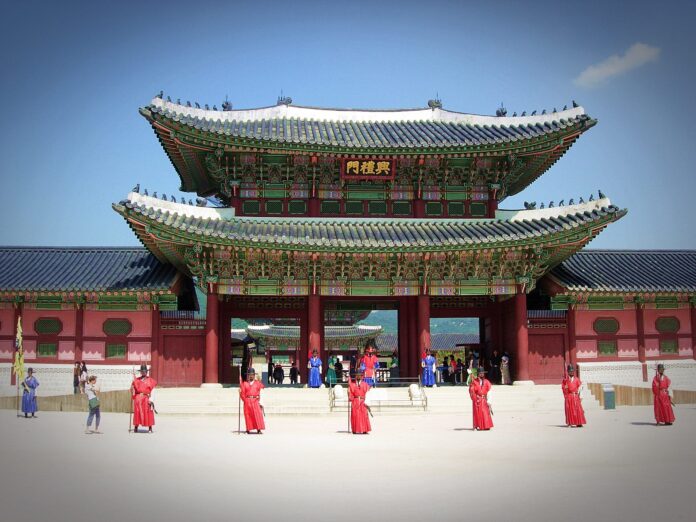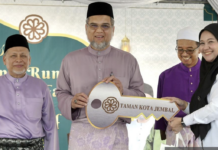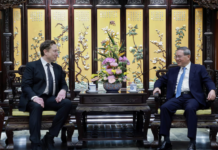KUALA LUMPUR, April 30 — The news that Malaysia is already welcoming back international travellers after the government announced the reopening of its borders on April 1 is looked upon favourably by South Korean and Japanese tourism organisations’ representatives in the capital.
Managing Director of Korea Tourism Organisation (KTO) Malaysia & Brunei, Yang Kyung Soo, said the move is like “opening doors” for more flocks of Malaysian tourists to visit his homeland.
This is especially so because like Malaysia, his country had opened the door to visitors effective April 1 as well, with KTO consistently promoting South Korea’s culture and tourism products throughout the pandemic.
As the “contagious” interest in the Hallyu trend or Korean Wave among Malaysians helps create demand, it is no doubt that South Korea has become such a highly-searched destination and one of the top places for Malaysians to choose as their next travel destination.
“During the pandemic period, we saw more and more Malaysians enjoying various K-drama, K-movie, K-pop content and consuming K-food. Many of them want to go to South Korea and experience the authentic Korea that they watched on screens.
“Hence, this is why this year we are specifically promoting travel destinations which were seen in K-dramas, K-movies and etc.
“For instance, we have a promotion event called ‘Hallyu Korea Travel Itinerary Contest’ whereby they can make their own Korean travel itinerary based on their favourite K-drama and video shooting locations, and win a prize,” said Yang to Bernama.
Yang pointed out that although it might take some time for the travel industry to recover due to the SOPs and travel restrictions, he is optimistic about the response and knowing travellers have been eager to come to South Korea.
“Based on the insights from our recent survey at Matta Fair 2022, about 26 per cent of travellers are likely to travel to South Korea in the next 6 months.
“Hence, in 2022, we are targeting a recovery of around 30 per cent of tourists compared with 2019, in which the number of Malaysian tourists who visited South Korea was around 400,000,” he added.
Both Malaysia and South Korea reopened their borders on April 1 without mandatory quarantine for travellers, with the Malaysian side announcing further relaxation of rules – doing away with the need for testing and medical insurance coverage for fully vaccinated travellers – effective May 1.
Meanwhile, the Japan National Tourism Organisation (JNTO) Kuala Lumpur Office also welcomed Malaysia’s move to reopen the doors to travellers with the hope Malaysians will visit Japan once the country’s border is opened.
Its Executive Director Fumi Matsumoto said while Japan remains closed to tourists for now, it has started to ease the border restrictions gradually at the national level.
“In regards to international tourists, we at JNTO are still awaiting for any announcements from the Japanese government. Seeing as Malaysia itself has started to receive vaccinated international tourists without imposing quarantine as announced recently, we know that Malaysians are keen on overseas travel.
“Japan has always been a popular destination for Malaysians, so we definitely hope that many of you would come to visit once Japan reopens its borders,” she told Bernama.
Though there will still be issues that need to be considered, such as on availability of flights, vaccine recognition by Japan and procedures for obtaining negative test result certificate, Matsumoto pointed out that it will take some time before international travel between the two countries return to pre-pandemic levels.
Moving on, she highlighted that JNTO Kuala Lumpur office is all geared up to take its cultural tourism to a greater level.
“In a recent feedback survey of ours, we found that pre-pandemic trends in what Malaysians look for during travel to Japan have not changed even till now, the top two answers still being food and nature (i.e. the four seasons) respectively.
“Of course, each prefecture has a different charm with unique culture and precious traditions that we think international visitors would find interesting and worth experiencing.
“By moving to promote culture and tradition, we hope to introduce and bring more tourists to other lesser-known, lesser visited regions and prefectures as well. It would also lead them away from crowded popular areas for a more refreshing trip,” she added.
Matsumoto also noted Tokyo, the Kansai region and Hokkaido have always been the top locations mostly visited by Malaysians before the pandemic.
“Pre-pandemic, the number of international tourists to Japan had been on an upward trend. Of course, even now there is no change to our hopes that many tourists will come to visit Japan.
“But we believe it will take time due to the unavoidable issues that come with transitioning into the endemic phase,” she said.
It was reported that within four days of reopening the borders on April 1, more than 250,000 international travellers had entered and left Malaysia through the main entry points.



















